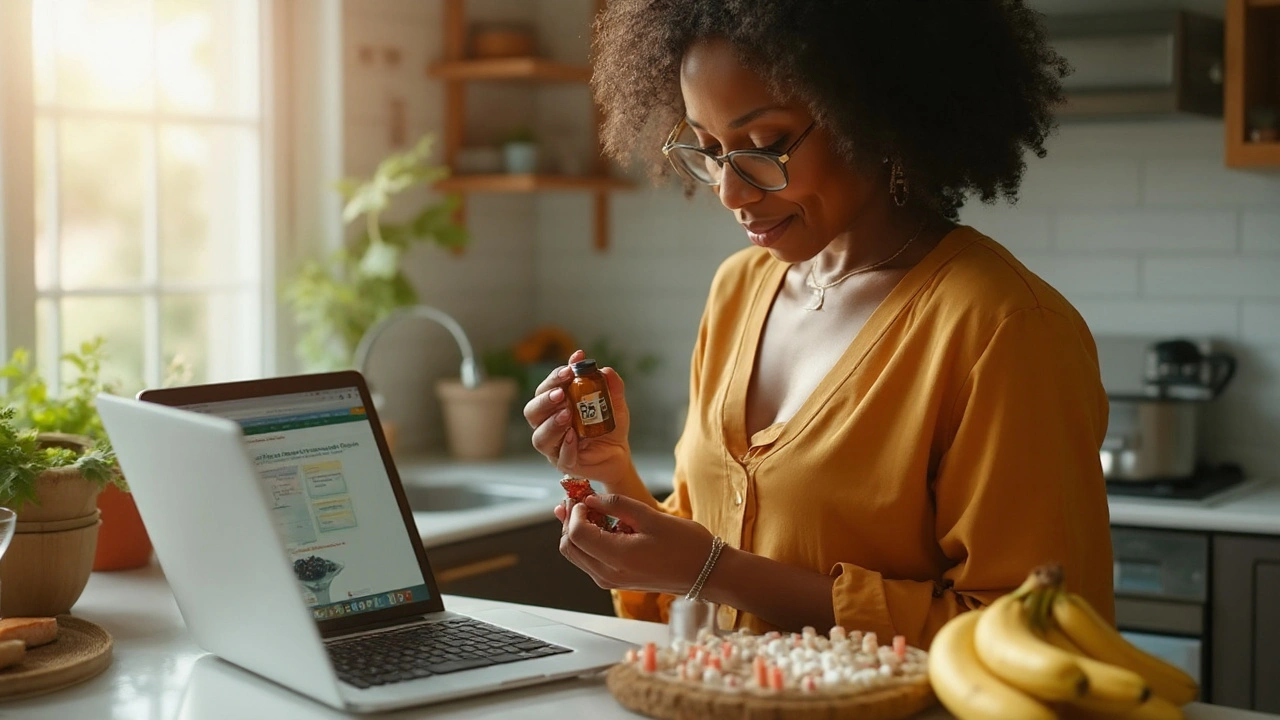If you’ve ever wondered how much vitamin B6 you should take, you’re not alone. B6, also called pyridoxine, helps your brain, your blood and your metabolism work right. Too little can leave you tired, while too much may cause nerve problems. Below we break down the most common dosage ranges, when you might need extra, and how to stay safe.
For most healthy adults, the recommended daily intake is 1.3 mg for men and 1.2 mg for women. Pregnant women usually need 1.9 mg and nursing moms 2.0 mg. Kids need less – toddlers around 0.5 mg and teenagers about 1.0 mg. These numbers come from nutrition guidelines and are enough to keep your body functioning.
If you buy a B6 supplement, you’ll often see doses from 5 mg up to 100 mg per pill. Most people only need the lower end. A 5 mg tablet adds a small safety cushion to your diet without risking side effects.
Doctors sometimes prescribe higher B6 for specific issues. For example, people with certain nerve‑pain conditions may get 50–100 mg a day, but only under medical supervision. Another case is when you’re treating a deficiency caused by medication that depletes B6, like some anti‑seizure drugs. In those situations, your doctor will decide the exact amount and watch for any problems.
Even if you’re not sick, some athletes take 10–20 mg to help with protein metabolism. The key is to keep the dose below the tolerable upper intake level – that’s 100 mg per day for adults. Going above that for weeks or months can cause numbness or tingling in the hands and feet.
Here are a few quick rules to follow:
Most everyday foods already give you a good amount of B6. Meat, fish, bananas, potatoes and fortified cereals are top sources. If you eat a balanced diet, you probably don’t need a high‑dose pill.
When you do use a supplement, choose a reputable brand. Look for products that list the exact amount of pyridoxine HCl and have third‑party testing. Cheap “mega‑dose” pills often contain fillers or inaccurate labeling.
Finally, remember that vitamin B6 works best when taken with food. A meal helps your body absorb it and reduces the chance of stomach upset.
Got more questions about B6? Check out the articles below that dive deeper into specific conditions, safety tips and user experiences. All the posts are tagged with “B6 dosage,” so you can quickly find the info that matches your situation.

Can pyridoxine (vitamin B6) ease menopause symptoms or balance hormones? Evidence, dosing, safety, and how to use it-clearly explained and grounded in 2025 UK guidance.